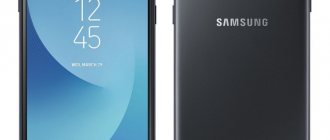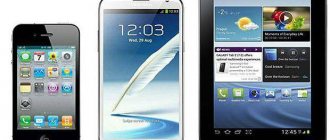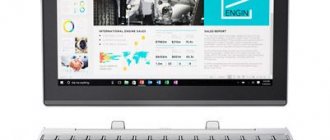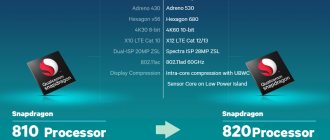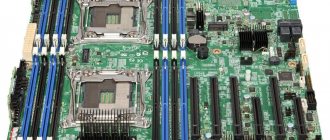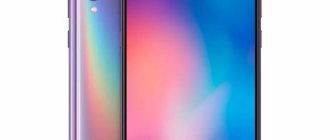14:00 2019-03-30 / Ivan Kushch / Phones and smartphones
Since the beginning of the year, almost without exception, smartphone manufacturers have introduced new flagship-class models. The devices have become even more powerful, received support for advanced screen unlocking technologies, truly frameless screens with crystal clear images, and acquired cameras that can shoot even in the dark. In general, choosing has become even more difficult. The team of the Yamobi.Ru Internet project decided to help its users and is publishing a fresh selection of the best advanced smartphones of 2020.
What is the most important thing in a flagship-class smartphone? First of all, the ability to use the device for three or even four years and not think about upgrading. So it turns out that at the time of purchase, a new gadget should have the most powerful hardware. And this is a top-end processor, a lot of memory, a high-quality screen, a long-lasting battery, cameras capable of shooting in any lighting, and advanced consumer functions.
High-speed LTE, contactless payment, face and fingerprint unlocking, as well as updating to the latest version of the operating system are all standard. It is clear that during the entire period of operation the device must be reliable, high-quality, and bug-free. Ideally, the owner should not be afraid of dropping or drowning it.
Also, top-end devices are characterized by unique features. In 2019, this is a screen with a cutout or hole for the front camera, a fingerprint scanner built directly into the screen, main camera units including black-and-white and wide-angle modules, speakers integrated into the display surface. In general, what engineers can come up with to surprise the public.
We have selected the 10 best smartphones of 2020, which, if you buy them, you won’t have to think about replacing them for the next few years. In addition to high quality and ease of use, all devices emphasize the wealth of their owners and the desire for everything new and advanced. Our rating includes smartphones from five brands – Apple, Huawei, OnePlus, Samsung and Xiaomi.
Samsung Galaxy S10 Plus
The leader in the ranking of the best smartphones of 2020 is the Samsung Galaxy S10+. This mobile phone has incorporated almost all the known innovations of recent times. It uses the most powerful processor, a lot of RAM and built-in memory. The interfaces on the “ten” work well, mobile games launch and work very quickly, you can install any application. The device runs on the latest Android 9 operating system with subsequent updates.
Among many other smartphones, Galaxy Es 10 Plus stands out for its stylish appearance. You immediately understand that this is an expensive mobile phone. It's perfectly put together. Glass and metal body. There is protection against dust, the phone can survive immersion for 1 hour in water to a depth of 3 meters.
Among the features worth noting is the fingerprint scanner built into the surface of the screen. With it, you can unlock your device and, for example, use contactless payments from your smartphone. In the upper right corner of the display there is a cutout for the front camera – this is also a highlight of the gadget. The front camera, by the way, is stabilized and shoots in 4K.
Read test review of the Samsung Galaxy S10 smartphone >>
The Galaxy S10+ also received a capacious 4100 mAh battery, there is fast charging and wireless charging. In addition, Samsung can be turned into an external battery and recharge other smartphones and other equipment.
The camera deserves special mention. A triple module is used here: 12 megapixels with variable aperture ƒ/1.5/2.4; 12 megapixels with ƒ/2.4, as well as 16 megapixels with ƒ/2.2, phase detection autofocus, optical stabilization in the main and telemodules, LED flash. The camera takes excellent pictures. What is important is that the pictures are of decent quality even in twilight and darkness. Video is recorded in 4K. The picture quality is at a high level.
Asus ROG Phone II
Asus recently launched a new flagship, the Zenfone 6, on the market, but we want to look at their other new product, the ROG Phone II, as it is even newer and more interesting from a technology point of view. Moreover, this is the only full-fledged gaming smartphone in our review.
- ROG Phone II is the first smartphone on the market with Snapdragon 855 Plus. This processor differs from the basic version, first of all, in the graphics accelerator enhanced by 10-15%;
- The smartphone has one of the most complex and high-quality cooling systems. If the SD855+ provides high FPS in games, then advanced cooling makes this FPS also stable;
- The ROG Phone II screen (6.59'') provides a refresh rate of 120 Hz versus 60 Hz in most modern smartphones;
ROG Phone II is a true king of specs, a gaming monster from Asus
- The touch sensor of the device operates at a frequency of 240 Hz - this is a record for smartphones. Gives the gadget the maximum speed of response to user actions: only 4 milliseconds versus 8-16 in other devices;
- ROG Phone II is one of the still few smartphones on the market equipped with the most advanced fast UFS 3.0 memory;
- The smartphone has four antennas and Wi-Fi AD support;
- ROG Phone II features special and enhanced haptic feedback, as well as specialized AirTrigger II triggers;
Using accessories from Asus, the ROG Phone can easily be made to resemble the form factor of a Nintendo Switch or even an Nvidia Shield
- The device has stereo speakers (the manufacturer promises 2.5 times louder sound than the first ROG Phone) and 4 microphones;
- The gadget is powered by a 6000 mAh battery (charging power – 30 watts);
- The smartphone has a number of advanced accessories that allow it to connect physical controllers, a second screen, and so on.
With such a bells and whistles of technology, among the shortcomings of gadgets we note the lack of a slot for memory cards, IP68 protection against moisture and dust, and an infrared port. There is also no optical stabilization device in the camera, the resolution of the main module of which, by the way, is 48 megapixels.
Samsung Galaxy S10
Second place in the rating goes to another top ten from Samsung. This is the basic version of the smartphone. The device has a large 6.1-inch AMOLED screen with a built-in front camera (Ininity-O) and an ultrasonic fingerprint scanner integrated directly into the display. It also uses a triple main camera with a 16 megapixel wide-angle lens and processing algorithms using artificial intelligence, a capacious battery, and Wi-Fi 6 technology.
The 7 nm 8-core Samsung Exynos 9820 processor, 8 GB of RAM and 128 GB of internal memory are responsible for the performance. The device can be unlocked not only with a fingerprint, but also with a 2D face. The device has support for LTE with aggregation of 7 carrier frequencies, two SIM cards.
The manufacturer promises a long battery life and quick battery recharging from zero to 70% in 20 minutes. The phone was equipped with wireless charging and the ability to recharge external devices. Among other things, the device is protected from dust and water according to IP68 class and is equipped with a 3.5 mm jack for wired headphones.
Read test review of the Samsung Galaxy S10 smartphone >>
The Samsung Galaxy S10 is controlled by the Android 9 operating system with a custom One UI shell. In general, the “ten” has everything you can expect from a flagship phone.
You can buy the Samsung Galaxy Es 10 in three body colors: black (Onyx), green (Aquamarine), white (Mother of Pearl).
OnePlus 7 Pro
The best in terms of price-quality ratio
OnePlus products have finally left the league of cheap but functional smartphones, setting a price tag of $669 at the start of sales. But for this, buyers get a stylish frameless smartphone with high-quality software, a 90 Hz display and powerful hardware.
There is no particular point in considering the OnePlus 7T Pro released in the fall for purchase: the improvements are minor, while the price tag on the 7 Pro has already dropped.
The cost on Yandex.Market is 40,390 rubles.
Huawei P30 Pro
“Bronze” goes to the Huawei P30 Pro smartphone, which experts call one of the best in terms of photography quality. The main feature of the device is the 5x optical zoom of the main camera, the resolution of which is 40 megapixels. The camera itself consists of four modules - wide-angle, ultra-wide-angle, periscope zoom and rangefinder (TOF). The front camera resolution is 32 megapixels.
In addition, Huawei P30 Pro received a 6.47-inch OLED screen with a resolution of 2340×1080 pixels with a drop-shaped cutout for the front camera. The display has a built-in fingerprint scanner and a speaker for playing external sounds. The interfaces are powered by the Kirin 980 processor, 8 GB of RAM and 128/256/512 GB of ROM. The 4200 mAh battery ensures the smartphone operates for 1.5-2 days without recharging. There is also support for 40W fast charging and 15W wireless charging.
The Huawei P30 Pro body is made of metal and glass and is protected from dust and moisture according to the IP68 standard. The device is controlled by the Android 9.0 Pie operating system with the proprietary EMUI shell version 9.1. In the future, Huawei promises to regularly release updates.
You can buy the Huawei P30 Pro smartphone in two body colors: light blue (with a gradient from pink to sky blue) and “northern lights” (a gradient from dark blue to ultramarine).
Realme X2 Pro
Realme launched their first flagship last year and it has become one of the best devices available. Realme X2 Pro demonstrates all the expected characteristics such as the Snapdragon 855 Plus chipset, a 4000 mAh battery and a 4-module camera.
However, the Realme device also offers a number of features that you might not get from a typical 2019 flagship device. This includes 50W wired charging (recharge to 100% in just over 30 minutes) and a headphone port.
Good prices for realme x2 pro.
Apple iPhone XS Max
Apple's top-end smartphone ranks fourth in the ranking of flagship smartphones of 2020. The iPhone XS Max received a 6.5-inch OLED screen with a cutout at the top for the speaker, sensors and front camera. In many ways, the appearance of the iPhone XS Max coincides with the design of the iPhone X, announced in 2020. The body consists of metal and glass.
The iPhone XS Max is equipped with the latest 7-nanometer A12 Bionic processor, which claims to be the most powerful mobile chipset. It has two cores for performing complex tasks and four for running in power saving mode. They are complemented by an updated Neural Engine system, which provides support for machine learning in real time. This is complemented by 4 GB of RAM and 64, 256 or 512 GB of internal memory.
The water resistance of the iPhone XS Max has reached the level of top Android flagships; the mobile phone is IP68 certified. The smartphone received a capacious lithium-ion battery of 3174 mAh. On average, it is enough for a day of intensive work.
iPhone XS Max supports Face ID, powered by the TrueDepth camera system, Secure Enclave, and Neural Engine. Thanks to the latter, Face ID constantly learns to detect changes in a person’s appearance, which allows you to always correctly recognize the owner of the iPhone.
The main camera of the iPhone XS Max is dual with a six-lens lens and has a resolution of 12+12 megapixels. The aperture of the wide-angle lens is f/1.8 and the telephoto lens is f/2.4. The camera supports 2x optical zoom and 10x digital zoom. Both modules support optical image stabilization. The camera copes well with shooting in difficult lighting conditions. The front camera of the iPhone 10 Es Max has a resolution of 7 megapixels and an f/2.2 aperture. The key features of the front camera are the “Portrait” mode for taking selfies with a depth of field effect and support for various portrait lighting effects.
Apple
Little is known about the most long-awaited – in every sense – smartphone of 2020, fortunately Apple presented its new products, iPhone Xs and iPhone Xs Max, not so long ago. However, fans of the brand and market experts are already making predictions about what the new iPhone will be like.
Apple is expected to have as many as three flagships again this year. Among the expected innovations are a triple main camera, one of the modules of which will work as a telephoto lens, a new Apple A13 processor, as well as the replacement of the unique Apple Lightning connector with a more universal USB Type-C.
They also say that the new iPhones may be devoid of “bangs”, and, in principle, the screen frames on them will be as narrow as possible. They predict that Face ID will work more clearly, as well as the return of the on-screen fingerprint scanner. Finally, there is talk that the new models will be able to use the new Apple Pencil digital styluses. Well, wait and see. Today, only one thing can be said with 100% certainty: the prices for new iPhones will definitely be astronomical.
Apple iPhone XS
The top 5 most productive smartphones of the year include the iPhone XS. The body of the device is made of tempered glass and a metal frame on the sides. On sale you can find three body colors - gold, space gray, silver.
The base iPhone model boasts a 5.8-inch frameless Super Retina OLED display. The device is equipped with the most powerful processor in the Apple company's line, A12 Bionic. A 4-core video chip, a proprietary Apple development, is responsible for super-fast graphics processing in the iPhone XS. It performs many tasks almost instantly and supports Metal 2 technology. This graphics engine allows you to significantly speed up graphics processing. There is 4 GB of RAM, and the built-in flash memory can be 64, 256 or 512 GB. The smartphone runs on the iOS 12 operating system.
iPhone XS dual main camera: 12+12 megapixels. The front camera has a resolution of 7 megapixels. The mobile phone can shoot video in 4K format at a frame rate of up to 60 per second. There is optical stabilization.
In terms of communications, the iPhone XS has it all. This includes LTE with VoLTE capability, dual-band gigabit Wi-Fi, NFC and support for contactless payment Apple Pay, Bluetooth 5.0. The device copes well with the role of a navigator. There are GPS, GLONASS, Galileo and QZSS navigation modules, a digital compass, and iBeacon precise location function.
The built-in lithium-ion battery provides day-long operation at medium load. The battery here has a capacity of 2658 mAh. The device supports fast charging, however, the standard charger does not charge the smartphone quickly. An adapter with express charging function must be purchased additionally. There is also wireless charging; the adapter also needs to be purchased separately. It is not included in the package.
Xiaomi Mi9
The average price is 37,9650 rubles.
Characteristics:
- smartphone with Android 9.0
- Dual SIM support
- screen 6.39″, resolution 2340×1080
- three cameras 48 MP/16 MP/12 MP, autofocus
- memory 128 GB, without memory card slot
- 3G, 4G LTE, LTE-A, Wi-Fi, Bluetooth, NFC, GPS, GLONASS
- RAM capacity 6 GB
- battery 3300 mAh
- weight 173 g, WxHxD 74.67×157.50×7.61 mm
This is the latest flagship from the famous Chinese company Xiaomi, which has high-end specifications (including the top-end Snapdragon 855), looks beautiful, has an edge-to-edge screen and an impressive triple camera similar to the HUAWEI Mate 20X.
The large screen with Super AMOLED matrix has a large brightness reserve and good viewing angles. Even in bright sunshine you will have no problems reading the text.
The main triple camera instantly focuses on the desired subject, but lacks an optical stabilizer. In the daytime, the photos are very clear and detailed; for night shooting there are several modes, including manual and automatic. Video recording is in 4K resolution and at a speed of 60 frames per second.
Pros : there is face unlocking, excellent sound from the speakers, a silicone case is included.
Cons : there is no way to expand the memory, there is no moisture protection, the camera block protrudes from the body.
Huawei P30
The next smartphone in the ranking of the best mobile phones of 2020 is the Huawei P30. The device has a very stylish appearance and is finished with expensive and high-quality materials. In some ways, the Huawei P30 resembles the latest devices in the Galaxy S line from Samsung. On sale you can find case colors - light blue and “northern lights”. The case itself is made of glass and metal and is certified to dust and water resistance class IP53.
The smartphone is equipped with a 6.1-inch OLED display with a resolution of 2340×1080 pixels. It has rounded edges. There is a U-shaped notch at the top for the front camera. The Huawei Kirin 980 chipset, 6 GB of RAM, 128 GB of internal memory, expandable with microSD cards up to 256 GB, are responsible for the performance. On your smartphone you can play heavy hand-drawn games, watch videos in 4K and FullHD. The sound quality is also pleasing.
Built-in 3650 mAh battery with support for 22.5 W fast charging. The battery lasts for 1.5-2 days with active use. The pre-installed OS is Android 9 Pie with EMUI 9.1 shell. The device has built-in GPS and GLONASS navigation modules, as well as support for LTE, NFC, Bluetooth 5.0, dual-band Wi-Fi, and infrared port.
Read the test review of the Huawei P30 smartphone >>
The Huawei P30 has a triple main camera: 40 megapixel main sensor, 16 megapixel with a wide-angle lens, 8 megapixel with a telephoto lens. The front camera resolution is 32 megapixels. Both cameras shoot very well. In good lighting, you can’t complain about the pictures. At night and in difficult lighting conditions, photographs are also of excellent quality in most cases.
OnePlus 7T
This smartphone rightfully staked its claim as a cool and at the same time relatively cheap flagship last year. There is a 90H FHD+ OLED display, 30W fast charging for the 3800mAh battery, and a triple camera setup.
In fact, this gadget bears a lot of similarities to the OnePlus 8, so we recommend the 7T if you don't mind the old chipset and lack of 5G.
Like OnePlus 7T, but want a different design? Then it is preferable to look towards OnePlus 7 Pro with similar characteristics and plus a retractable camera.
Good prices for OnePlus 7 Pro.
Samsung Galaxy S10e
Samsung Galaxy S10e is the simplest flagship smartphone from Samsung for 2020. Light, thin, not miniature, but moderately compact smartphone compared to its larger brothers. It uses a 5.8-inch Super AMOLED screen and a hole-punch cutout for the front camera in the upper right corner.
The mobile phone has two rear cameras, one front camera, and a fingerprint sensor on the side of the device. In general, everything you need is there, but there are fewer innovative features here than in the Galaxy S10 and Galaxy S10+. However, bright body colors are available on sale, including blue, green and yellow - something that the older brothers do not have. This is unique.
But the hardware of the Galaxy Es 10e is similar to its more expensive counterparts. It uses an 8-core Samsung Exynos 9820 chip, 6 GB of RAM and 128 GB of internal memory. The device is equipped with a 3100 mAh battery and has a fast charging function. The phone can also charge other devices wirelessly, and this is a very useful thing. That is, you take the Galaxy S10e, attach, for example, the iPhone XR to it and charge the iPhone from the Samsung. Apple devices can't do this.
Read test review of the Samsung Galaxy S10 smartphone >>
The Samsung Galaxy S10e has all the necessary connectors and wireless functions. There is, for example, a 3.5 mm headphone jack, NFC for contactless payments via Samsung Pay, Bluetooth 5.0, fast LTE, support for two SIM cards (one slot is combined with a slot for memory cards).
Compared to older models, the Galaxy S10e has a simpler camera. The main camera is dual – with a wide-angle lens. True, wide-angle without autofocus. This means that there will be no problems when photographing architecture, but it will be inconvenient to photograph small objects on the table. The front camera takes selfies well and allows you to hide skin blemishes, etc. In general, the photos and videos turn out quite decent.
Xiaomi Mi A3
Our review of new products ends with another brand new smartphone from Xiaomi. It’s hard to call it unique in any way, especially since there are at least two major complaints about the gadget: just HD screen resolution and the lack of NFC. Nevertheless, the smartphone is interesting and here’s why:
- Pure Android. The Mi A series does not use MIUI and relies on pure Android (otherwise known as Android One). Cons: fewer functions and settings. Possible advantages: clean and simple interface, higher performance/autonomy, availability of applications like Google Camera;
- Gaming performance. The combination of the Snapdragon 665 and a screen with only HD resolution is important to provide surprisingly high FPS in games for an inexpensive gadget;
An increased battery capacity, coupled with a more energy-efficient processor (11 nm) and an AMOLED display, allows the A3 to perform well in battery life tests
- Compactness. Mi A3 is one of the most compact devices on the market. With a 6'' display, thanks to the 19.5:9 aspect ratio and thin frames, it has very compact dimensions: thickness 71.9 mm, height 153.5 mm;
- Camera. The A3 is equipped with a triple camera at the rear. The main module is 48 MP. The front front camera is 32 MP. According to tests, the pictures turn out to be of very high quality, thanks to Google software, ahead of many devices also equipped with a 48 MP main module (see their list);
- Design. Mi A3 has one of the most successful rear panel designs. And although you won’t be particularly surprised by iridescent gradients now, Xiaomi did a very beautiful job for the Mi A3;
The authors of many reviews emphasize that A3 patterns look really nice in real life
- UFS 2.1. Mi A3 is one of the most affordable gadgets on the market with fast UFS 2.1 permanent memory, which is mainly used in flagship smartphones;
- Unlike the Mi A2, the A3 has room for a 3.5 mm jack and a slot for memory cards. In addition, the A3 switched to an under-screen fingerprint scanner.
Finally, we note that in its homeland Xiaomi sells many devices familiar to us under other names. For example, the Mi 9T and 9T Pro mentioned above are known there as K20 and K20 Pro. In turn, the Mi A3 is hardware identical to the Mi CC9e smartphone, which has not left China. But the two devices differ in software: Mi CC9e uses MIUI, while Mi A3 uses Android One.
—————————————
That's all for today. However, we will constantly update this material so that the most interesting smartphone models that have recently gone on sale are present here.
- about the author
- Recent publications
Raik
Igor Andreev is the author of articles for ITRew.ru and Our-Firefox.ru. I am passionate about modern technologies, I talk about them in my texts) Follow me — twitter.com
Raik recently posted (see all)
- All differences between Mi 10 and Mi 10T and 10T Pro (+table) - 10/01/2020
- Galaxy S20 FE vs S20, S10 and S10 Lite: which is better? — 09.25.2020
- All the differences between the Xbox Series S and the Xbox One S and X in terms of characteristics. What to choose? — 09/23/2020
Tell others:
- Click to share on Twitter (Opens in new window)
- Click here to share content on Facebook. (Opens in a new window)
- Click to print (Opens in new window)
- Click to share on Pinterest (Opens in new window)
- Click to share on Telegram (Opens in new window)
- Click to share on WhatsApp (Opens in new window)
Apple iPhone XR
Apple's cheap flagship ended up in eighth place in our ranking. The iPhone X Er is undeservedly overlooked by many users, but this device actually has the greatest battery life among all generations of Apple phones. Thanks to the capacious battery, the device operates for an average of 1.5-2 days.
The iPhone XR display has a diagonal of 6.1 inches with a resolution of 828x1792 Liquid Retina pixels. The screen, although with fairly decent frames on the sides, looks very organic. At the top there is a recess for the speaker, front camera and sensors.
In terms of speed, the iPhone XR is good. It uses the proprietary A12 Bionic processor, which is equipped with the XS and XS Max. That is, you get a top-end (for today) processor, made using a 7-nm process technology, for a much lower cost. The only difference in hardware is the amount of RAM. XEr has 3 GB.
The main camera of the iPhone XR is single, but it has a plus - it has a wide-angle lens. This, in turn, allows you to take clearer pictures, even in poor lighting. Although the XR version lacks a dual camera, you can use portrait mode. Along with portrait mode, it became possible to adjust the degree of background blur during shooting. The front camera of the smartphone has the ability to shoot video in Full HD resolution, 60 FPS, which is very good.
One of the most noticeable differences from older models is that the iPhone XR smartphone can be purchased in one of 6 colors: white, black, blue, yellow, coral and rich red.
LG G7 ThinQ 64GB
A new generation of flagship device from LG. Externally - no revolution, widescreen display and body made of premium materials.
In the G6, many users criticized the front camera, and here it has undergone significant changes, now the photos are of much higher quality. The rear camera was great before, but now it’s even better! Don't forget that the second dual main camera module is wide-angle.
Let's also note the Hi-Fi DAC Quad DAC from ESS - it sounds great. It’s not for nothing that some users call the LG G7 a music smartphone.
There is water protection.
- Screen diagonal: 6.1 inches
- Screen resolution: 3120×1440
- Weight: 163 g
- Number of SIM cards: 2
- Processor: Qualcomm Snapdragon 845
- Memory capacity: 64 GB
- RAM capacity: 4 GB
- Battery capacity: 3000 mAh
- Rear camera: dual 16/16 MP
- Front camera: 8 MP
- Memory card support: yes
Xiaomi Mi8
Our rating also includes a smartphone from Xiaomi. This Chinese brand is especially popular in our area. Well, the Xiaomi Mi8 model with a metal and glass body has become a classic among flagship devices.
The device can compete with devices from Samsung, Apple and Huawei in terms of performance. This is achieved through the use of the top Snapdragon 845 chip and dual 12 megapixel cameras with artificial intelligence algorithms. In addition, the highlight of the gadget is the 3D face scanning system, which can significantly increase unlocking security.
The Xiaomi Mi8 smartphone has a bright 6.21-inch AMOLED display with Full HD+ resolution. At the top there is a “monobrow”, which houses the speaker, front camera and various sensors. The screen, by the way, has an integrated fingerprint scanner. Unlocking the screen works quickly and with a minimum amount of defects.
In addition to the powerful Snapdragon 845 chip, 6 GB of LPDDR4X RAM, 64, 128 or 256 GB of ROM are responsible for performance. In terms of communications, it is worth noting support for NFC, Bluetooth 5.0, dual-band Wi-Fi, GPS navigation, GLONASS, Galileo, QZSS, Beidou.
The battery in Xiaomi Mi8 is 3400 mAh with support for Quick Charge 4.0+ fast charging. Charging from 0 to 100% will take only 50 minutes, with 15 minutes being enough to fill half of it. The custom shell uses MIUI 10 with Android 8.1 with constant updates.
The best flagship smartphones 2020: what devices will this year be remembered for?
Reward accrued
This material was written by a site visitor and was compensated for.
Despite the fact that many smartphone manufacturers are postponing all the best decisions for 2020, even this year many A-brands were able to surprise - we will talk about them today. We present to your attention a selection of the best flagship mobile devices of the outgoing year!
Note. All the devices listed below are the best in the subjective opinion of the author - you may not agree with him, you can safely leave any criticism in the comments. It is also worth noting that there are no gold or silver winners on this list - all smartphones are presented in a chaotic order.
announcements and advertising
2080 Super Gigabyte Gaming OC for 60 rubles.
Compeo.ru - the right comp store without any tricks
RTX 2060 becomes cheaper before the arrival of 3xxx
Ryzen 4000
series included in computers already in Citylink
The price of MSI RTX 2070 has collapsed after the announcement of RTX 3xxx
Core i9 10 series is half the price of the same 9 series
The price of memory has been halved in Regard - it’s more expensive everywhere
This selection of gadgets does not set out to identify the best smartphone in principle or in terms of price/quality ratio, performance, and so on. Thank you.
All headings with smartphones are clickable. When clicked, you will be redirected to the device page on the manufacturer’s official website. Also above all devices is indicated the cost of the minimum, most affordable version in Russian rubles.
- Apple iPhone 11 Pro Max (99,990 rubles)
Of course, it’s too obvious to start our material with a device that the entire Internet is talking about, but what can you do – it’s currently the most talked about flagship smartphone of 2019. The new product from Apple has not brought any fundamental changes - the company has saved all the main features of its smartphones until next year, when, according to rumors, a new iPhone “form factor” will be presented, which will include support for 5G networks and much more. However, even a simple improvement in performance, improved video and photo capabilities and the addition of a new color were enough for people to once again sweep thousands of new iPhones off store shelves around the world.
At the same time, I don’t want to seem like a hater of Apple products. Although their smartphones still do not have reverse wireless charging, do not break records for the speed of fast charging from a wire, and cannot boast of support for 5G networks, the iPhone 11, 11 Pro, 11 Pro Max have the most powerful GPU and CPU chips, and have a cool night mode photo shooting and some of the world's best displays. This is why the iPhone 11 (all its versions in general) are so popular at the moment.
- Samsung Galaxy Note 10 Plus (RUB 76,990 )
The phablet from Samsung, which was sensational at the time of its release, has several distinctive features. Of course, the device is flagship, as are its technical characteristics. The processor is the proprietary Exynos 9825 (in EU and CIS countries) or Qualcomm Snapdragon 855 (version for the USA). Very bright and rich Super AMOLED display with a resolution of 3040x1440p and a size of 6.8 inches (Plus version). Secondly, the smartphone turned out to be beautiful, versatile and original. Thanks to the sharp shape of the case and the variety of bright and classic colors, Note 10 (Plus) is suitable for both a girl, a student, and an adult, wealthy man at the same time.
Thirdly, the smartphone is promoted mostly by marketing features from the Note line. Smartphones in this series are very distinctive due to the presence of a proprietary functional S-pen stylus, a very large display and good battery life by flagship standards. One of its most important advantages is its cost, no matter how strange it may sound. The thing is that this is one of the most interesting competitors of the iPhone 11 Pro Max, the price of which is significantly lower.
- Huawei P30 Pro (59,990 rubles)
It’s worth noting right away that the smartphone is not perfect. It loses in many ways to other devices in today's selection: it is not the most productive, and the EMUI software shell has some bugs. But, as we have already said, our material just collects all the popular flagships, and it is up to our readers to find out which is better. And since Huawei P30 Pro is mentioned in our article, it was able to achieve enormous popularity around the world. He succeeded, of course, thanks to his video and photo capabilities. Without exaggeration, the company was able to open a new level in the field of image quality from mobile devices. Therefore, if you want one of the best “camera phones” for an affordable flagship price: Huawei P30 Pro is your choice.
Speaking of cameras, the main rear camera sensor is the RYYB sensor. Thanks to proprietary technologies, this sensor replaces some dark shades with lighter ones, adapting to each scene differently. Night mode in Huawei P30 Pro is almost the best among Android flagships. Moreover, the main camera is equipped with 5x optical and 50x digital zoom, respectively - this is the world's first smartphone with such indicators.
- Samsung Galaxy S10 Plus (76,990 rubles)
At the time of its release, only the lazy did not talk about the anniversary flagship of the S-series from Samsung. The smartphone is good in everything, from technical characteristics to design. This year the South Korean company did not skimp on original beautiful colors - the S10 also has them. And if we remember the existence of the more affordable Galaxy S10e, then it has another beautiful, outstanding smartphone model available in yellow. And if you think this device is more boring compared to the Galaxy Note 10, you are wrong. The smartphone is equipped with a frameless display, and the same round dot in the display (talking about the single camera of the Galaxy S10), and reverse wireless charging, and fast wired charging.
In addition, this is a completely new design within the line, and therefore the Galaxy S10 (Plus) continues to be popular to this day. Against the backdrop of the latest flagship trends, this smartphone is even quite compact. Moreover, if you don’t need a phablet with an S-Pen stylus, but want a smartphone from Samsung based on One UI, the Samsung Galaxy S10 will appeal to you.
- OnePlus 7 Pro (40,990 rubles)
The latest flagship smartphone from OnePlus is not officially sold in Russia, but no one forbids using various services for delivering a device from another country if it interests you. The smartphone has not received the same mass publicity as the above-mentioned gadgets. However, OnePlus 7 Pro is almost the best value for money. For 40,990 rubles - this is the minimum cost of a smartphone on the gray market in Russia - you get flagship characteristics, an original and attractive appearance and a stunning high-quality display with a refresh rate of 90 hertz.
And yes, this is one of the few smartphones whose screen can be considered truly frameless. This display was achieved due to the absence of a front camera on the front part - it is hidden in the upper end on a moving mechanism.
- Xiaomi Mi 9T Pro (33,990 rubles)
The weakest point of this smartphone is the camera. It's not bad for the money, but, unfortunately, it can't compete with more expensive flagships. On the other hand, this was expected. After all, a device for 33,990 rubles cannot be in any way inferior to smartphones, the cost of which, at best, is twice as high. At this point, we smoothly move on to the main advantage of the flagship from Xiaomi - its price. Mi 9T Pro is the most affordable smartphone based on the flagship Qualcomm Snapdragon 855 processor, 6 GB of RAM and 128 GB of storage, respectively.
Of course, the smartphone is equipped with many flagship features. Unique design, frameless display with built-in fingerprint scanner and much more - all this is available in Xiaomi Mi 9T Pro. Such a device is an excellent and very profitable purchase for those who do not actively use the camera on their smartphone, or simply do not have high hopes for their smartphone in the field of video and photo capabilities.
- Sony Xperia 1 (79,990 rubles)
Futuristic appearance, 4K OLED display and its aspect ratio - everything you need to know about this flagship. Actually, you can’t say anything more interesting about him. Sony Xperia 1 is the world's first smartphone with an OLED matrix and an actual resolution of 3840x1644p. The aspect ratio was 21:9, which is also a record. The remaining technical characteristics are “simply” flagship and do not stand out in any way: Snapdragon 855, 6 and 128 GB of RAM and permanent memory, respectively. The main attention, in addition to the display, of course, should be paid to the powerful stereo speakers with Dolby Atmos technology, as well as the main camera capable of recording video in 4K at 60 frames per second, and Slo-mo at 960 frames per second.
It is thanks to these features that the smartphone turned out to be interesting and quite popular among flagships. As for the benefits in terms of purchasing a smartphone and its further liquidity, then, to put it mildly, everything is not so smooth. Sony smartphones are losing user interest every year. This is due to the high price of almost 80,000 rubles and the same high loss of value over time.
- Asus ROG Phone II (54,990 rubles)
A striking example of the fact that even a non-mass smartphone can be very popular. As you can guess from its appearance, the device is created exclusively for gamers. Obviously, the ROG Phone 2nd generation is equipped with the best flagship hardware. Under the hood of this monster is the Snapdragon 855 Plus SoC at a frequency of 2.96 GHz and Adreno 640 graphics. The smartphone has up to 1TB of permanent memory, and as much as 12 GB of RAM! An almost 7-inch AMOLED display with Full HD+ resolution (2160x1080p) and a refresh rate of 120 Hertz is ideal for gaming. Secondly, the smartphone is equipped with additional keys, support for external gaming accessories and a sophisticated liquid cooling system.
The manufacturer offers a huge number of accessories for this smartphone for a fee. Among them you can find both a branded gamepad connected to the device, and entire docking stations with separate active cooling, which turn this device into a full-fledged computer that can be connected to any monitor or TV.
This concludes our list. These were all the most popular flagship smartphones available for purchase at the time of writing. However, these are not all devices that attract users' interest. Now we will discuss the future flagships of this year, which will be released a little later.
Let's take a brief look at the flagship devices that will be released very soon.
- OnePlus 7T Pro
At the moment, it is unclear what exactly the upcoming flagship will be. According to rumors, the device will receive a 6.55-inch AMOLED display with a resolution of 3100x1400p, a refresh rate of 90 hertz and support for HDR10 mode. The SoC will be the top-end Snapdragon 855 Plus. The smartphone will have 8 GB of RAM and 128 or 256 GB of storage. It is also known that the cameras will be improved - many users complained about the mediocre quality of pictures in the OnePlus 7 Pro.
In connection with all of the above, it is stupid to deny the high popularity of the future flagship from OnePlus. The device should turn out to be beautiful, powerful and quite affordable, in comparison with the flagships of A-brands in the CIS countries. Oh yes, the OnePlus 7T (Pro) will be the first smartphones to run Android 10 out of the box.
- Google Pixel 4
Google smartphones are always in great demand abroad. In our country, the popularity of these devices is limited, for the most part, only to the Internet. The thing is that all Pixel devices are not officially available in Russia, and the 4th generation will probably be no exception. However, this is not a reason to pass by the expected new product from the “evil corporation”. The main features of Pixel devices are stable software support for several years, being one of the first to receive new versions of the Android OS and, of course, a clean version of the operating system.
According to rumors, the device will not receive the latest SoC from Qualcomm, namely the Snapdragon 855 without the Plus prefix, 6 GB of RAM and 64 or 128 GB of permanent memory, respectively. The main feature of the new product, as is the case with the new iPhones, will be an improved rear camera. Moreover, it even looks very much like the design of the back side of new smartphones from Apple - that’s a “coincidence”, or trends of the past year.
This is where our article has definitely come to an end. Share your opinion both about smartphones and about our material in the comments - constructive criticism is very important to us. Thank you for your attention!
OnePlus 6T
The top ten most productive and functional smartphones of 2019 include the OnePlus 6T. The device has an ergonomic and extremely stylish appearance. The body is made of glass and metal with 2.5D curves. OnePlus 6T received a 6.4-inch OLED display with a resolution of 2340×1080 pixels and a drop-shaped cutout for the front camera. The flagship also received durable Gorilla Glass 6 and a fingerprint sensor built into the screen.
The OnePlus 6T has a dual main camera: 16 megapixels + 20 megapixels. The second module is used for portrait shots, but without optical zoom. The aperture of each of them is f/1.7. There is also a very rare optical image stabilizer. The front camera is content with only electronic stabilization. In order to get brighter and clearer photos at dusk, there is a “night mode” with a longer shutter speed. Video can be shot in 4K resolution at up to 60 frames per second, and super slow motion can be recorded in Full-HD at 240 fps.
The smartphone is powered by Snapdragon 845 with 6 GB or 8 GB of RAM, as well as 128 GB of internal memory for data storage. According to the manufacturer, this is currently one of the fastest Android smartphones on the market. The device also received a fairly large 3700 mAh battery with OnePlus Fast Charge technology. Out of the box, the mobile phone runs on Android 9 Pie under the Oxygen OS shell.
The manufacturer claims that OnePlus 6T can operate in LTE at speeds of up to gigabit per second. There is also fast Bluetooth 5.0 and Wi-Fi ac standard on board. But there is no 3.5 mm audio jack for connecting headphones, only through an adapter to the USB Type C port.
Sony Xperia 1
You might have heard about the announcement of the interesting flagship Xperia 1 back in February. Alas, the device reached real sales only in June, and came to Russia even later. In addition, let's say first, the price of the gadget is not for the faint of heart.
Nevertheless, technically the device is interesting. And for those who already owned previous Sony flagships, the Xperia 1 may seem like a worthy upgrade. At the time of release, the smartphone has at least three unique features:
- This is the first flagship with an aspect ratio of 21:9, thanks to which, with a 6.5'' display diagonal, the width of the gadget is only 72 mm;
- The first gadget with a 4K AMOLED display. We have never seen such high resolution in AMOLED screens for smartphones before. Pixel density – 643 PPI. This is more than any flagship this year;
- The Xperia 1 is also the first smartphone to feature Eye Autofocus.
It was Sony that was the first to start the fashion for super-elongated displays in new products in 2020, which Motorola has already supported in a number of its devices
Of course, the Xperia 1 also has key features from previous Sony flagships. This includes IP68 water protection, Stamina mode for energy saving, 960 FPS video shooting in Full HD, 3D model builder and Dynamic Vibration System for advanced tactile response.
There is also something in which, with the release of the Xperia 1, Sony has finally caught up with its competitors. For example, the Japanese flagship now has not one, but three cameras: the company has added a telephoto module to the main one, as well as an ultra-wide-angle lens (a record 130 degrees). The main module, in turn, finally received optical stabilization, a wide aperture and a pixel size of 1.4 microns.
Nokia 9 PureView
- When: February 2019
- How much: from $850
If the new smartphones of 2020 surprise with the increased number of cameras, then Nokia 9 breaks all the templates. The main camera in it will consist of 5 modules at once, combined with laser autofocus and LED flash in an impressive array on the back of the glass body.
Nokia 9 will be equipped with a 5.99-inch AMOLED display with 2K resolution and HDR10 support, a 4150 mAh battery and 6/8 GB of RAM. The weak point of the flagship will be the Snapdragon 845 processor, which will be less relevant with the release of competitors on the 855th dragon. But there is information that in August Nokia will re-release a nine based on the SD855 with 5G support. Note that Nokia 9 will be one of the few flagships running a pure version of Android OS.
iPhone 11
- When: September 2019
- How much: from $999
What you see above is not an April Fool's joke, but a very likely design for the new iPhones. Insiders claim that Apple is now choosing between two options for the layout of the main camera: a large square protrusion in the corner of the body or horizontal placement of sensors with a flash in the middle. According to rumors, the first option will be used in the iPhone 11 Max, which will receive a triple camera, and the horizontal camera is attributed to the basic version with a dual module. However, the launch of the new generation is still a long way off, and the design of the devices may change.
From reliable sources it is known that the iPhone 11 uses the Bionic A13 processor and lacks 5G support. Everything else is just guesswork, including the use of a fingerprint scanner integrated into the display, the abandonment of the cutout for the front camera and its relocation under the screen (Cupertino won’t reduce the unibrow to a drop-shaped cutout, so as not to copy Android devices), and even such bold assumptions as a complete transition from using physical SIM cards to electronic ones.
Google Pixel 3 Lite
- When: spring 2019
- How much: 400-450$
Google does not know how to keep secrets, this fact is confirmed with enviable regularity. So the long-time dream of many adherents of the pure Android OS, the inexpensive Google Pixel, has already fallen into the hands of journalists long before the official announcement. The younger Pixel will differ from the already presented third-generation devices in its completely plastic body, the use of IPS instead of an OLED matrix, and a more modest Snapdragon 670 processor.
The device will receive a meager, by the standards of 2020, 32/3 GB of memory without expandability and a 2915 mAh battery, but will retain the 3.5 mm headphone jack, which is missing in older versions. Also, for a reasonable price, the user is offered fast charging, TypeC and NFC module. But the main thing here, of course, is the top camera (single 12 MP module), which in terms of image quality will not differ from its older brothers. Rumor has it that the Pixel 3 Lite will debut in two versions - a compact device and its XL version with a diagonal of 5.5 and 6 inches, respectively.

